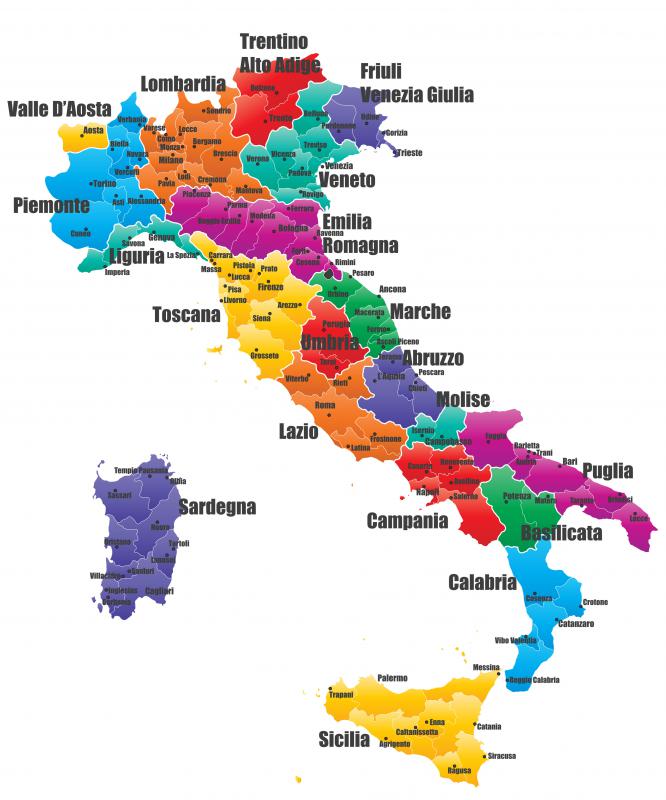What is a Pilchard?
A pilchard, more commonly known as a sardine, is a type of small fish that’s found in many places across the world. Pilchards nearly always swim in large schools, and can grow to around 14 inches (35 cm) in length. The fish are popular to eat, and are famous for the tightly-packed tins in which they are sold. There are several different species of pilchard, although the difference between the fish and a sardine is not always clear.
Pilchard fish belong to the Clupeidae family. The fish are classified as oily, which means that the tissues contain a large amount of oil. They are closely related to herrings, another type of oily fish, which also tend to move in large schools.

Some examples of species include the South American, White and European pilchard. Officially, there are six species that are named pilchard, with more classified as sardines. There are a number of other species, however, which are from the same family and are often called pilchards.
The fish are commonly found in the Northern Hemisphere, but there are some species that live around Australia and other parts of the Southern Hemisphere. Traditionally, the fish were found in large numbers near the island of Sardinia, which is where sardines get their name. Today, however, the fish are no longer so abundant in this region.

As pilchards are oily fish, there are a number or purported health benefits to eating them. Omega 3 has become widely known in recent years, largely due to the effect it is thought to have on the heart. The fish contain a lot of this fatty acid, which makes them a healthy choice of food. Other nutrients contained in the fish include vitamin D and protein. A bonus is that the meat of the fish contains a relatively low amount of contaminating chemicals.

Although there is some debate about the difference between a sardine and pilchard, generally the terms are used interchangeably. Some experts, however, define sardines as young fish and pilchards as older specimens. Usually, the cut off date between sardines and pilchards is around one year. Another classification is the size of the fish, with specimens longer than 6 inches (about 15 cm) in length being pilchards.

Pilchards and sardines are sold in huge quantities across the world. Usually, the fish will come in cans that are tightly packed. This, combined with a commonly used opener on the tin, makes the fish an attractive option for people who want convenient, healthy food. The fish are usually packed in water or oil.
AS FEATURED ON:
AS FEATURED ON:














Discussion Comments
What's gross about eating the head of a fish, bagley 79? To us Africans, that's the best part of the fish. We even toss a coin to decide who gets the head. Yummy!
I know this sounds gross, but I was thinking that canned sardines still have their heads on. Is this true?
If so, that alone would be one big reason I would never try to eat any sardines. I have a friend who can't seem to get enough of them, but I am not even interested in trying one.
When consuming certain types of fish I know you have to be concerned with the amount of mercury you are getting. Is this also an issue when eating sardines?
Never in my life have I opened up a can of sardines and eaten them. I like different kinds of seafood, but this just doesn't sound very appealing to me.
I think eating sardines is something you either like or hate right away. If you don't like them right away, I can't imagine you would ever acquire a taste for them.
Ever since I was a kid I have loved the taste of sardines. I don't remember where I first tried them because nobody else in my family likes them, but I can easily eat a whole can of them in one sitting.
They are one of the best sources of Omega 3 that I know of. I know many people don't like them, and will take a supplement instead of eating something like sardines.
I think you get the best nutrition when you eat food instead of relying on a supplement. Even if I didn't like the taste of sardines, I think I would find other ways to get heart healthy fats in my diet.
I have always heard the word pilchard and sardines used interchangeably, and thought they were the same thing.
My husband loves to eat sardines, and I can hardly be in the same room with him when he opens up a can of them. I don't like the taste of any kind of seafood, but sardines is one kind of fish that I really don't like at all.
I know they are healthy and good for me, but I will find other ways to get Omega 3 fatty acid in my diet.
Post your comments